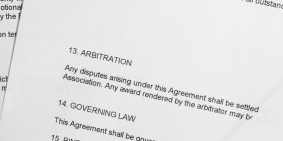
The Ninth U.S. Circuit Court of Appeal Fires a Warning Shot Across the Bow of California Residential Developers
Can homeowners sue a developer for the damages caused by that developer in marketing neighboring homes to sub-prime buyers who presented a high risk of foreclosure? The answer is an uncomfortable “maybe” for housing developers, according to the recent Ninth Circuit decision in Maya v. Centex Corp., 2011 DJDAR 14362. (9th Cir. Sep. 22, 2011).
This case arose against the backdrop of the national housing crisis. Nationwide, foreclosures are increasing, construction and purchase of new homes are decreasing and home values are plummeting. Plaintiffs purchased homes in new developments constructed by one of eight large national homebuilders between 2004 and 2006. Each homeowner made a down payment of twenty-percent or more when purchsing their home.
The homeowners contend that the defendants fraudulently represented that they were building “stable, family neighborhoods occupied by owners of the homes.” The homeowners allege that despite this representation, the developers marketed (and in many instances financed the purchase of the homes through their subsidiary finance companies) to “unqualified buyers who posed an abnormally high risk of foreclosure, including investors who had no intent to reside in the homes and were more likely to walk away from the homes in times of economic hardship.”
The homeowners’ claims essentially fell into two broad categories. First, they allege injuries that occurred at the time of the sale: namely, that they paid more for their homes than they were actually worth at the time, and that they would not have purchased their homes had defendants made the proper disclosures. The court referred to these claims as “overpayment” and “rescission” claims.
Second, the homeowners alleged injuries that occurred after the sale: namely, that their homes had decreased in economic value and desirability as places to live due to the numerous foreclosures and short sales.
The developers each filed a motion to dismiss, arguing that the homeowners (1) lacked constitutional standing; (2) failed to allege their fraud-based claims with particularity; and (3) failed to state a claim as to each cause of action under Rule 12(b)(6). The district court granted all of the motions to dismiss on the grounds that the homeowners lacked constitutional standing and that their alleged damages were “conjectural and speculative, not actual or imminent” as they had not sold or attempted to sell their homes.
The Ninth Circuit Court of Appeals reversed and remanded, holding that the homeowners had established injury-in-fact and causation with respect to their overpayment and rescission claims. The reviewing court further held that decreased value and desirability are concrete injuries-in-fact and that the homeowners should be permitted leave to amend their complaint to establish a sufficient “causal connection between defendants’ actions and plaintiffs’ harms.”
Housing developers throughout California and the rest of the country will be “nervously” watching what happens as this case continues to work its way through the litigation and appellate process. The potential impact could be substantial to the residential housing industry.
Disclaimer
Related Posts
March 1, 2011
Homebuilder Alert: Your Home Sales Contract May Not Protect You
If a homebuilders alternative…
January 18, 2011
Right to Arbitrate May be Waived by Proceeding With a Lawsuit
The California Court of Appeal recently…




